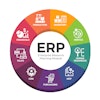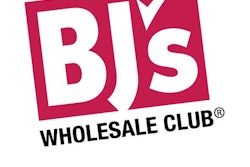
Consumer trust and confidence is one of the biggest issues facing the food industry. Hardly a week goes by without a breaking news story about a food safety or quality issue. From melamine in dairy products, and counterfeit wine to incorrect product labeling, commodity shortages, and hot-button sustainability and ethical issues – the industry has never faced more challenges. While scientific advances have led to a greater understanding of food health and safety, it has also increased consumer expectations for companies to use this technology to ensure quality and safety.
Coupled with stricter government regulations, companies now have more pressure than ever to improve standards, traceability and transparency, all while maintaining a positive brand image. Building trust in food is among the most complex problems that businesses and society must solve, but it is also one of the greatest opportunities for food companies that get it right. The ones that do will not only reduce their exposure to costly scandals that may otherwise damage their reputation, but also could also increase bottom line revenue.
The Food Safety Modernization Act of 2011 is raising the bar for all global food companies operating and exporting in the U.S., with new compliance requirements and increased risk across the food supply chain. Moreover, boards, governments and customers are all demanding more transparency around where goods and services are coming from and companies need to be concerned with whether their suppliers are using responsible and sustainable methods. By implementing a successful and sustainable program, companies can reap the fiscal benefits from creating food trust.
Well-positioned companies recognize the opportunity in planning and responding well to food trust issues and tend to follow similar best practices, including:
-
Fostering a positive culture of safety and quality everywhere from the farm to the shop floor.
Through behavior change and continuous improvement, leading organizations are adopting innovative practices that extend to staff awareness and training across their supply chain and to their suppliers. In addition, companies are using and analyzing lead indicators to identify and manage potential risks – which may extend to customer complaints, media reports and customer trends
-
Recognizing that risk resilient business culture and best practice behaviors start at the top.
Simply complying with regulations is no longer enough. Business leaders must assume more supervisory responsibilities and be fully informed and engaged with food trust issues. C-suite participation is essential to develop a culture that is relevant and responsive to current and emerging issues.
-
Continuously reviewing supply chain risks and benchmarking against best practice.
Companies that have complete oversight over all stages of the supply chain and suppliers, with risk management procedures tailored for multiple geographies have a compelling competitive advantage. Proactive behavior in supplier risk management leads to improved product integrity, reductions in compliance costs, product recalls and an improvement in consumer confidence in your food products.
-
Seeing value and investing in technology-enabled solutions.
Technological breakthroughs are helping to improve standards, manage risk and provide more information about food products. Advanced companies are investing in these novel technologies and challenging existing frameworks to enhance food trust outcomes.
-
Creating transparency and focusing on crisis management.
Food companies that develop trusted brands and confidence in the market approach food trust issues and crisis events in a swift and transparent way. They’re actively engaging in scenario analysis, planning and rehearsal, and have robust product recall and crisis procedures. And if a crisis does occur, these companies take remedial action and communicate information in an open and honest manner.
Building consumer confidence has become critical to both surviving and thriving in the food industry. The game has changed. Regulatory risks are increasing and supply chains are becoming more complex, deeper and harder to track. Your customers are demanding more and the implications for missing the mark are costing dearly from both a revenue and brand perspective.
The question is… how trustworthy is your food?


















